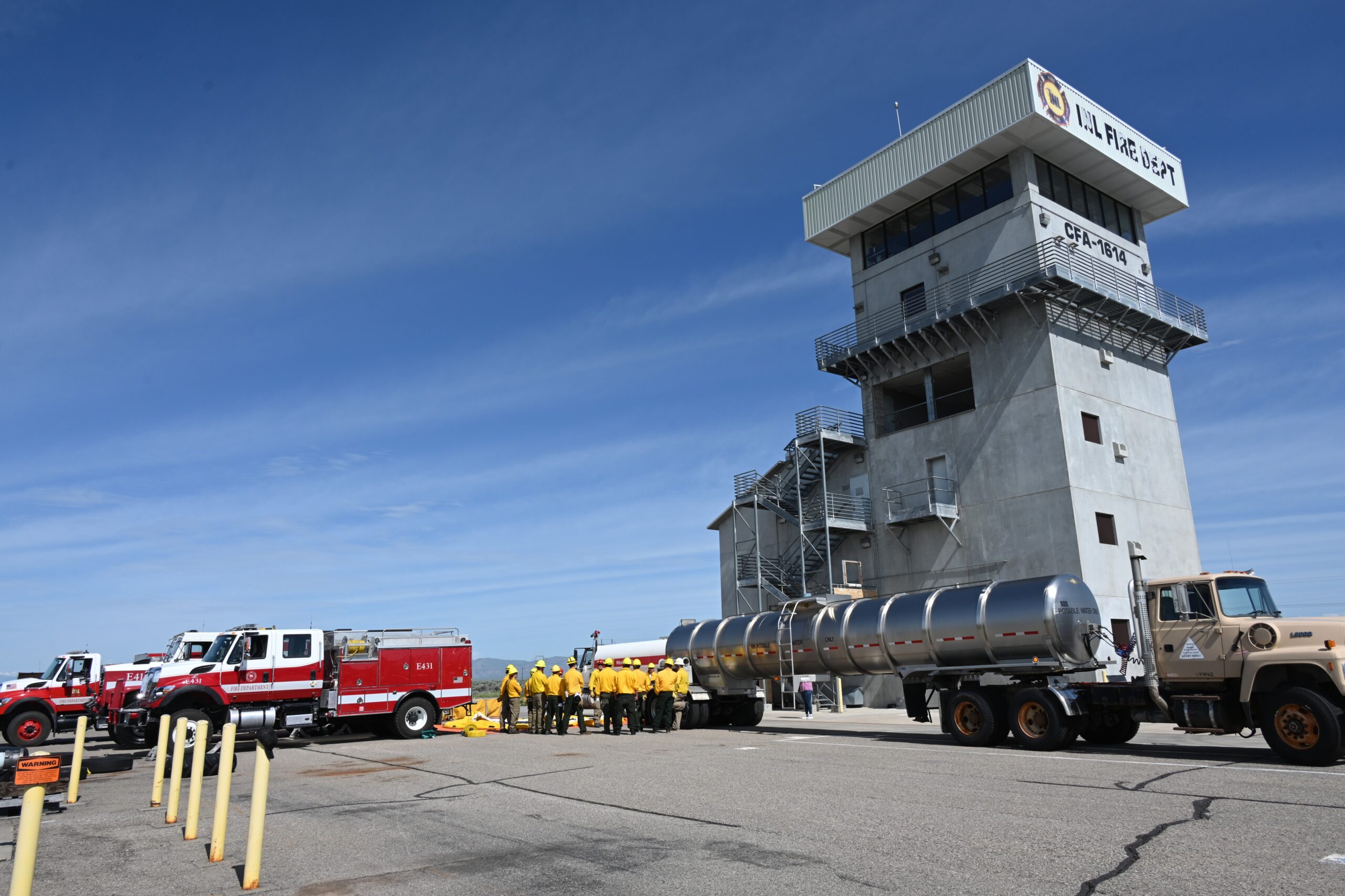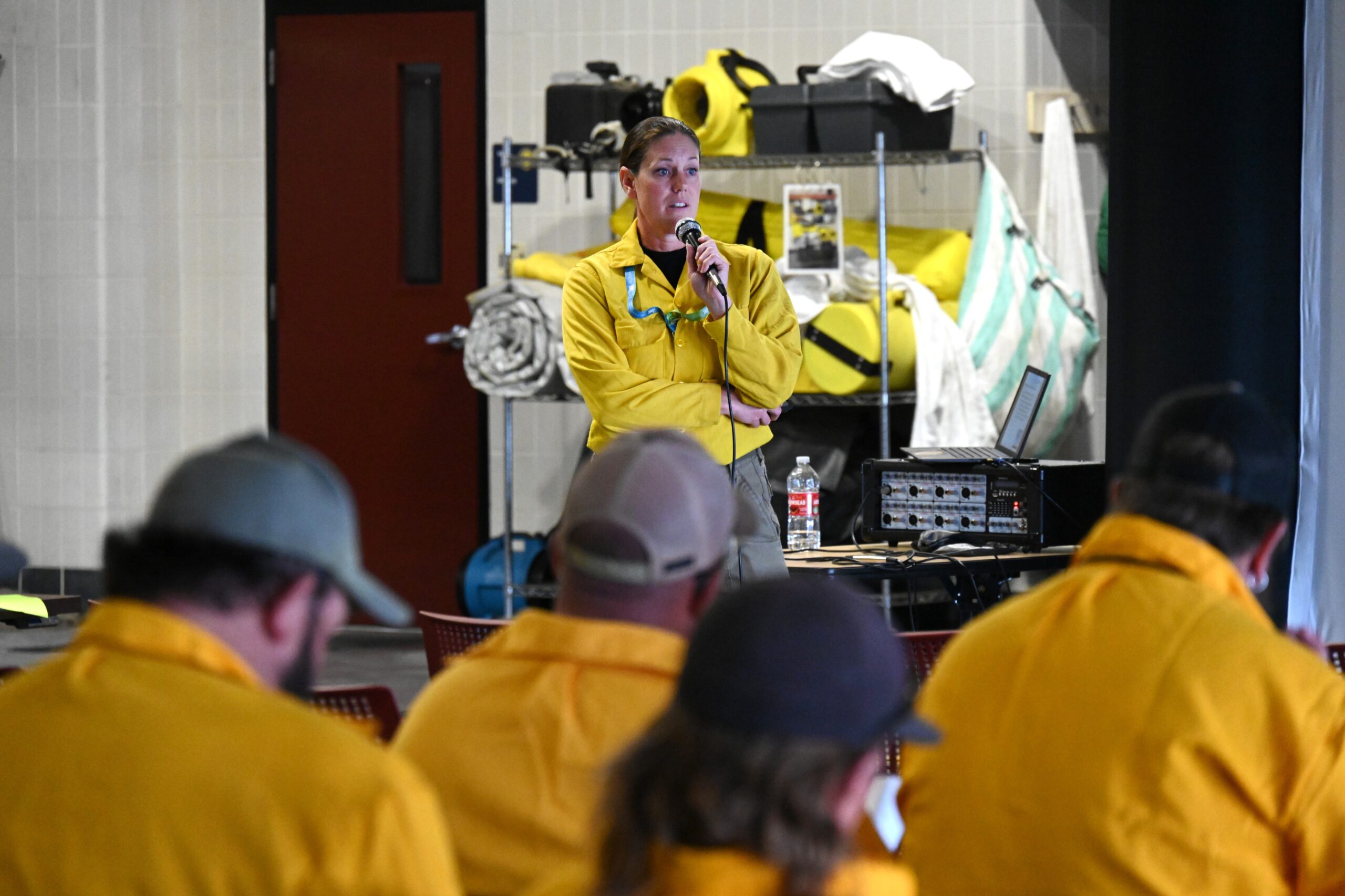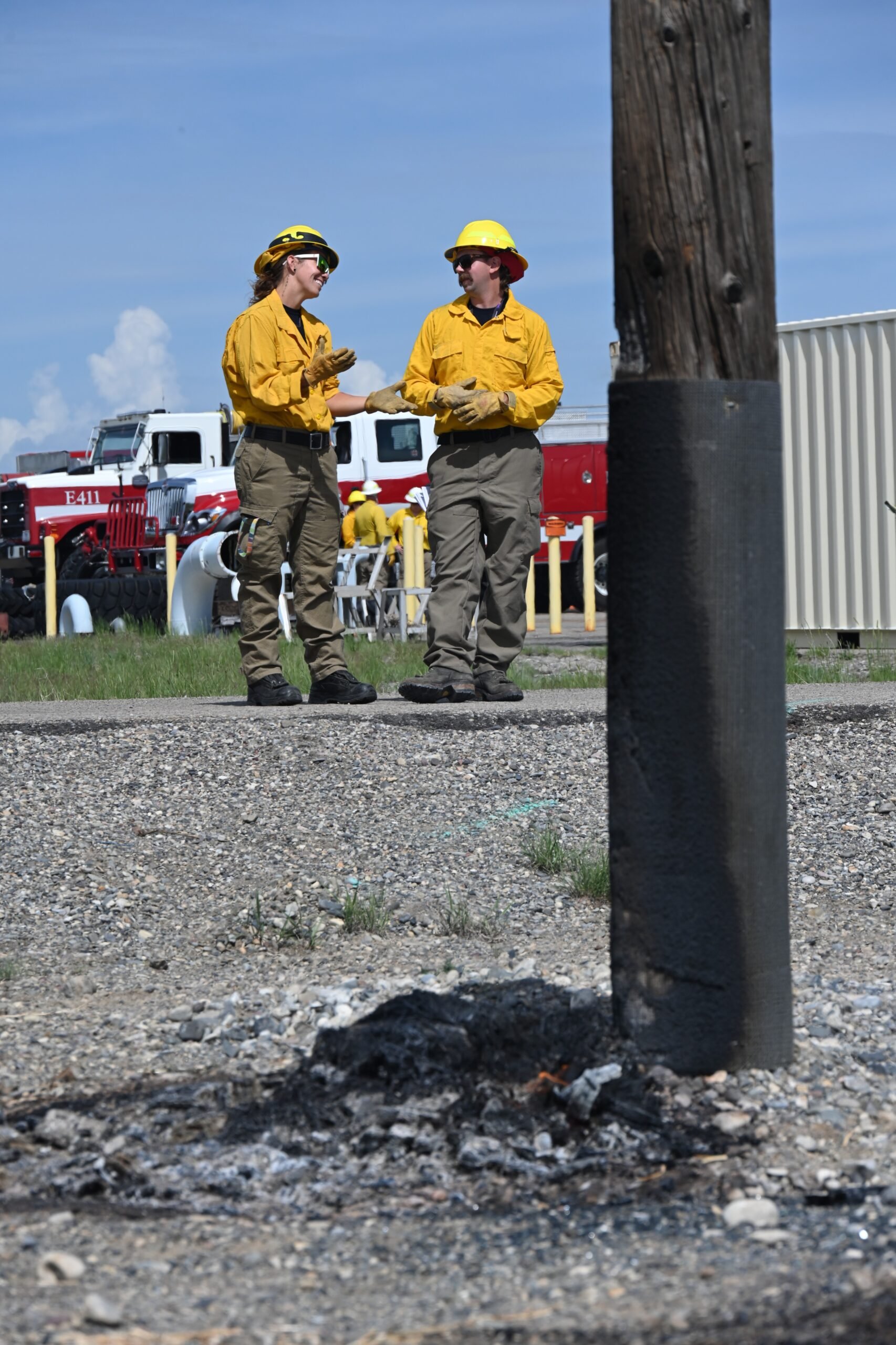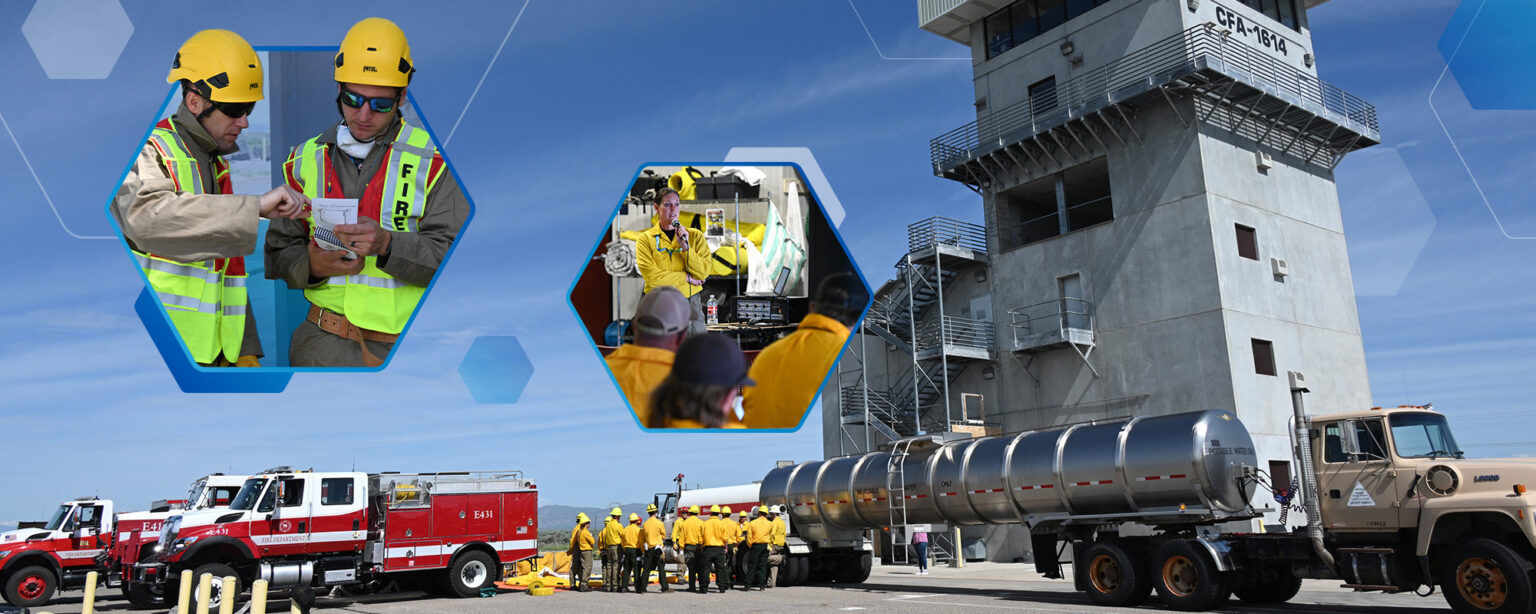IDAHO FALLS, Idaho — The Idaho National Laboratory Fire Department is preparing for the 2024 wildland fire season. Before each summer fire season, the department reviews its procedures and lessons learned from previous fires. This ensures firefighters are prepared to protect people, property and the environment at the desert Site from wildland fires.
INL’s precautions include:
- Painting or wrapping power poles with fire retardant.
- Roadside mowing, especially in areas prone to fires.
- Improving fire buffers – or defensible spaces – around at-risk structures.
- Coordinating with regional firefighting agencies.

“We have not experienced a lot of fire activity in the last five years, so there has been an amazing amount of grass and sage brush growth at the INL Site,” INL Fire Chief Jim Blair said. “I expect that the fuels will begin to cure in the coming weeks and will be ripe for fire activity by the beginning of July, if not sooner.”
INL’s highly trained fire department has extensive wildland firefighting experience. Twenty-two firefighters are always on duty, and the department can recall off-duty employees to bring its force up to 89 members if needed. For large emergencies, INL has mutual aid agreements with regional fire departments and the U.S. Bureau of Land Management. The agreements allow agencies to assist one another to fight fires and provide essential support during extended emergencies.
Education is an important part of the firefighting effort. While lightning can’t be avoided, INL employees are informed about high fire potential and precautions they must take. INL restricts off-road vehicles and work activities in times of elevated fire danger.

“It is our responsibility to reduce the likelihood of fires starting on INL-managed land, and our focus needs to be on preventing human-caused fires,” Blair said. “If we do experience a fire at INL, we will aggressively battle it to minimize acres burned and any impact to our customers and the region.”
Since 1994, the INL desert Site has averaged five fires that burned approximately 14,000 acres a year. Throughout this period, INL has avoided significant facility damage. Defensible buffer zones containing little or no fire fuel exist around all major buildings and facility complexes.
Additional background Information:
- The INL Fire Department has three stations on the desert Site, each equipped with wildland firefighting equipment. The department maintains three heavy wildland fire engines capable of driving over rough terrain, one tactical tender that can carry 2,000 gallons of water built for difficult terrain, one wildland engine, and a water tender capable of carrying 3,000 gallons of water, as well as multiple SUVs and pickups. Additional mobile water supplies are available from INL’s heavy equipment inventory.
- INL’s electrical power loop is redundant, allowing power to be redirected during wildland fires. Power poles are protected with either fire-resistant paint or mesh wrap. Major INL facilities have emergency backup power supplies.
- Radiological facilities and important buildings are protected by natural and constructed firebreaks, widespread use of noncombustible construction materials, reliable water supplies, and automatic fire suppression systems.
- The INL Emergency Operations Center in Idaho Falls and emergency control centers at each desert Site facility maintain trained teams able to communicate in real time with firefighters.

Additional resources:
- If INL needs more equipment and/or workers, the lab has reciprocal firefighting agreements with 67 regional fire and sheriff agencies. INL also maintains an interagency agreement with the U.S. Bureau of Land Management’s Idaho Falls District to provide aircraft, firefighting personnel and equipment to support large fires at the INL desert Site.
NEWS MEDIA CONTACTS:
Sarah Neumann, 208-526-0490, [email protected]
Lori McNamara, 208-520-6066, [email protected]





